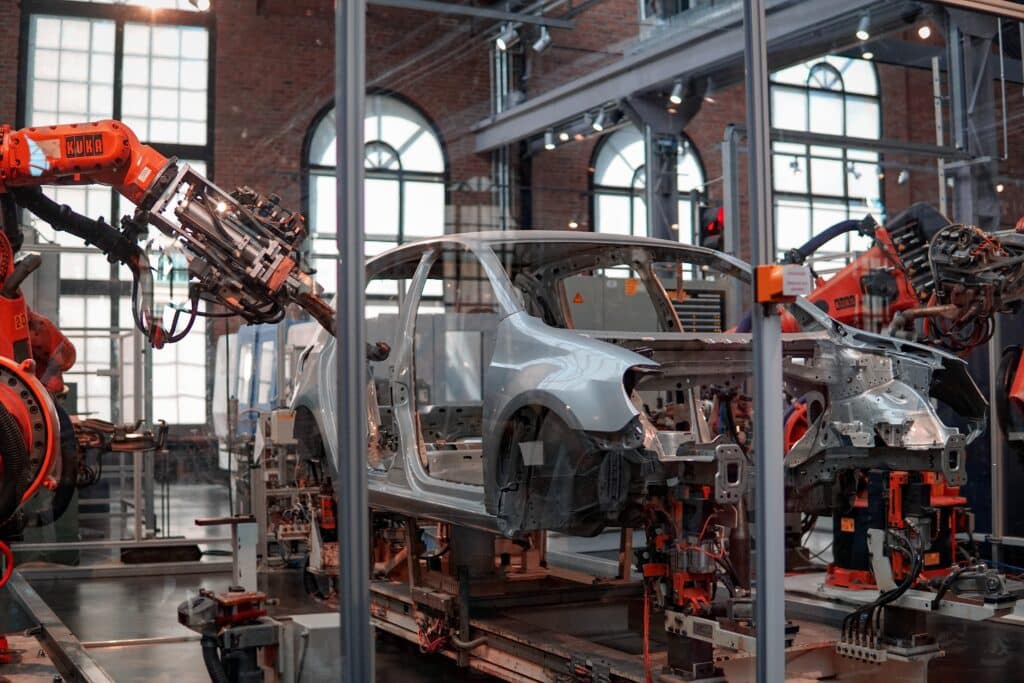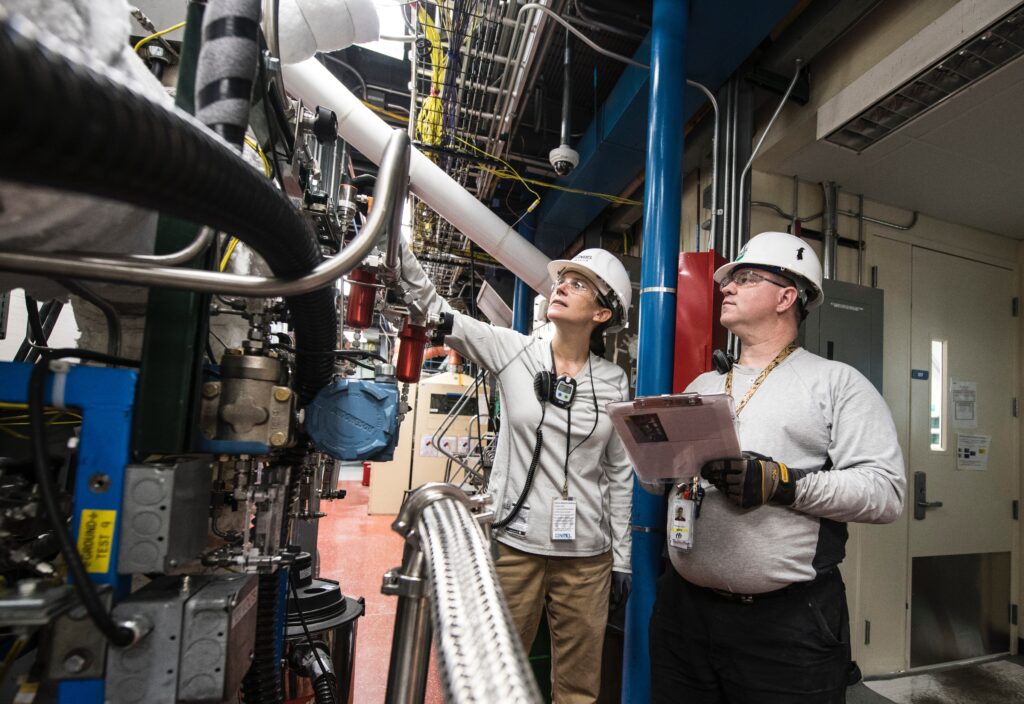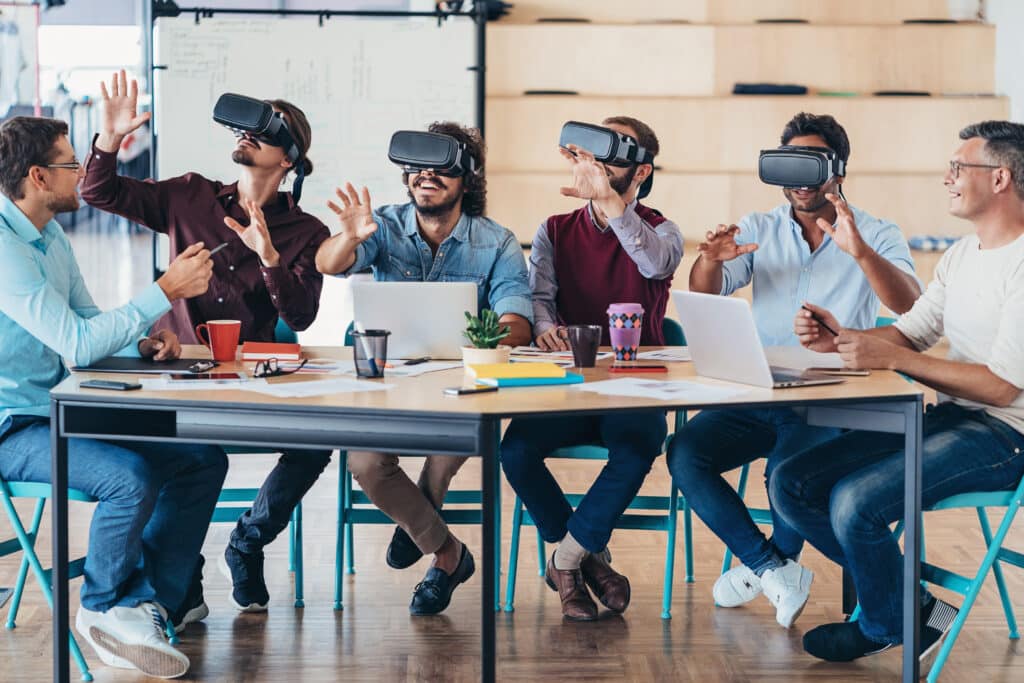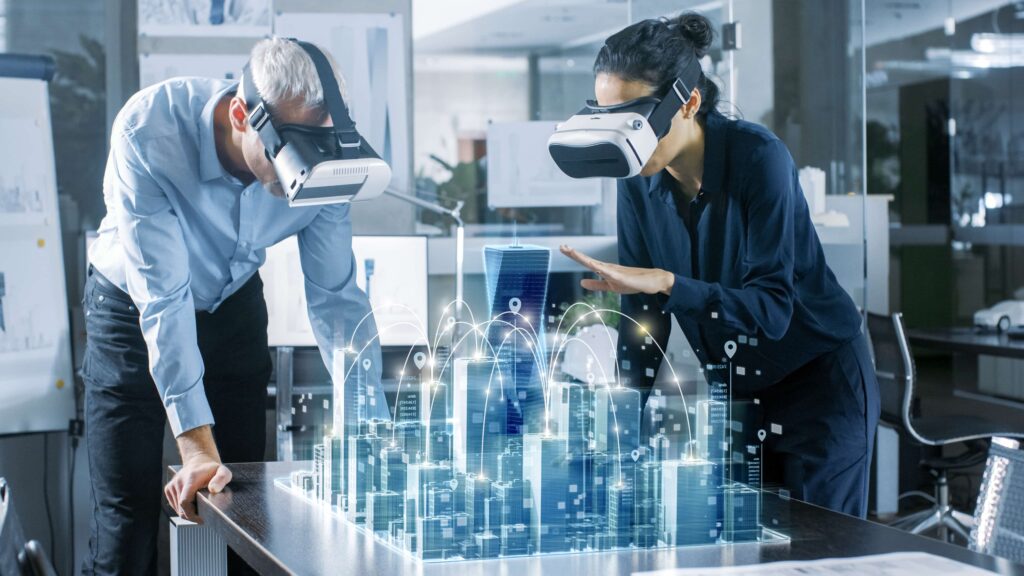Industrial Manufacturing: Shorten the Sales Cycle with Virtual Reality
Just over 100 years ago, Henry Ford installed the first moving assembly line and mass production was born. Since then, there has been a hyper-focus on efficiency along with extraordinary advances in manufacturing processes. Automation and computer technology combined with ever-improving process and quality management has allowed us to efficiently create products and materials with extreme precision, quality, and speed. We’ve recently entered the fourth industrial revolution described as “Industry 4.0”. Industry 4.0 encapsulates features like machine learning, autonomous systems, IoT, and the “Smart Factory”.
Manufacturing has experienced a major evolution in the past century that shows no signs of slowing down. However, one critical element for the success of the industry has remained relatively unchanged. That is the sales process and slow sales cycle. Of course, we now have more efficient ways to share information, review proposals, and calculate ROI than in the past. Unfortunately, simply being efficient doesn’t close deals and satisfy a buyer’s ultimate need to “see it and understand it.”
Challenges With The Traditional Sales Process
As products and materials become more complex, they become harder to demonstrate and understand. Even relatively simple products can be challenging or expensive to show clients. Products may be large in size or require inputs to operate that aren’t readily available or easily accessible. Travel may be required to see products in operation or when only available at corporate sites. Or it could be impractical or impossible to view the product or material at all.
All of these things can make an already complex sale even more difficult. It does not help that the B2B industrial manufacturing sales cycle can be many months or even years. Due to these long sales cycles, it is critical to eliminate as much cost, inefficiency, and waste as possible. This is not only to close deals more quickly but to avoid the impact of other variables as well. Technical advances or economic challenges can also work against the sale. For example, the current global uncertainty surrounding the Coronavirus/COVID-19.
Virtual Reality As A Secret Weapon
Virtual Reality (VR) has become a powerful sales tool due to significant technical advances. The companies who are embracing it early are using it as a “secret weapon” to stand out from their competition. Exact, interactive replicas of large or complex products and materials can be created for tradeshows, sales calls, or for employee training.
These experiences can include any scenario imaginable. Experiences can highlight the capabilities of a product or create an immersive, interactive demo. Buyers and stakeholders from around the globe can view the experience simultaneously. When used properly, it can eliminate the need for expensive, time-consuming, and inconvenient travel. Dangerous or impractical situations can be created with no risk to highlight products in their real environments or to showcase durability or safety features.
Finally, VR experiences are extremely memorable. In fact, Dr. Narendra Kini, CEO of Miami’s Children Health System, told Fortune that using VR in training results in a retention rate of up to 80 percent one year after training, compared to 20 percent just one week after traditional training.
Use Cases of Virtual Reality for Industrial Manufacturing
The best way to illustrate the opportunity that VR holds for industrial manufacturing is to review specific use cases. Let’s explore how companies in different areas of manufacturing can leverage VR to shorten the sales cycle.
Electrical
ASCO, a global corporation, builds large electrical switches that weigh between 2000-3000 pounds. In the event of a grid or building power failure, the switches have many unique features that allow a building or critical area to fail-over with no downtime along with hot-swappable parts. In the past, the device was only viewable by visiting the manufacturing facility. With immersive technology, that is no longer an issue. An exact working replica was created in Virtual Reality so that a potential buyer or stakeholder can simply put on a headset anywhere in the world and view that device. This allows the sales team to showcase their product more conveniently to more people, who in turn can make buying decisions more quickly.
Aerospace
Airline safety is of paramount concern when considering new products. A breakthrough in jet engine design recently reduced fuel consumption by up to 15%. Safety review is a major consideration when introducing new technology and materials. In VR, a replica was created in order to examine the inner workings of the turbine, including detailed guidance about how the technology works. Additionally, the VR experience replicates the exact scenario of what would happen if the engine failed while in flight. In “real-life”, it would be impractical to destroy a jet engine to showcase the safety features of the new technology. Virtual reality removes that limitation. In VR, these demonstrations can be performed as many times as needed with no risk.
Automotive
A large automotive brand manufactures a line of commercial vans that are primarily used for transporting items or people. These vans are typically ordered by a fleet manager in large quantities. There are two different lengths and three different heights of the vans. A Virtual Reality experience showing each of the configurations allows the distribution managers to test cargo of different sizes in the vans. Fleet managers can also preview different customizations from “inside” the van. This allows the fleet manager to get feedback and approval from many different stakeholders prior to ordering and ensures that there will be no surprises.
Custom Manufacturing
Building prototypes can be extremely expensive. With virtual reality, manufacturers no longer have to build physical models of each prototype. Instead, they can create VR experiences that allow buyers to hold and manipulate products or materials based upon an initial concept. This can speed up the decision-making process without the need for expensive or time-consuming setup and small-scale production. Additionally, buyers and stakeholders can collaborate on design and review allowing them to proceed much more quickly to a finished product and a closed deal.
Considerations When Using Virtual Reality
The examples use cases outlined above are just the beginning. The possibilities are endless when it comes to leveraging Virtual Reality. When considering whether VR can help shorten the sales cycle for your company, begin with the following considerations:
My product is:
- Too large to bring to a client office or tradeshow
- Very complicated to explain or demonstrate
- Potentially dangerous or hazardous to use
- Located in very few or specific geographies that require buyers to travel
- A component of another product that is required for demonstration
- Highly customizable or has many different configurations
Industry analysts predict that immersive technology, including Virtual Reality, will become as prevalent as smartphones over the next decade. Soon, it will become commonplace across all industries. However, it is still an emerging technology. Right now, there is not only the benefit of leveraging its effectiveness but also the strong interest that it creates because it is the next wave of innovation. Utilizing virtual reality makes companies stand out from their competition.
Visit any tradeshow and the booth with VR will have a line. Collaborate with potential clients around the globe without requiring them to travel (and spend days away from home) and they will be much more willing to meet often. Show products in an environment that is memorable and impactful and buyers will forget the competition. Leverage Virtual Reality to modernize the sales process and shorten the sales cycle.
Recommended for You
Check out related insights from the team
Get empowered, subscribe today
Receive industry insights, tips, and advice from Saritasa.



